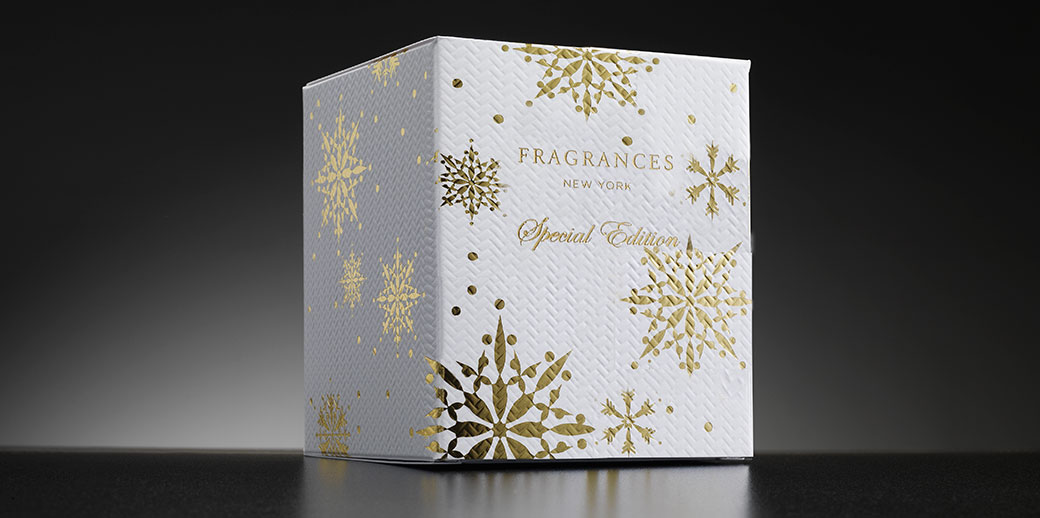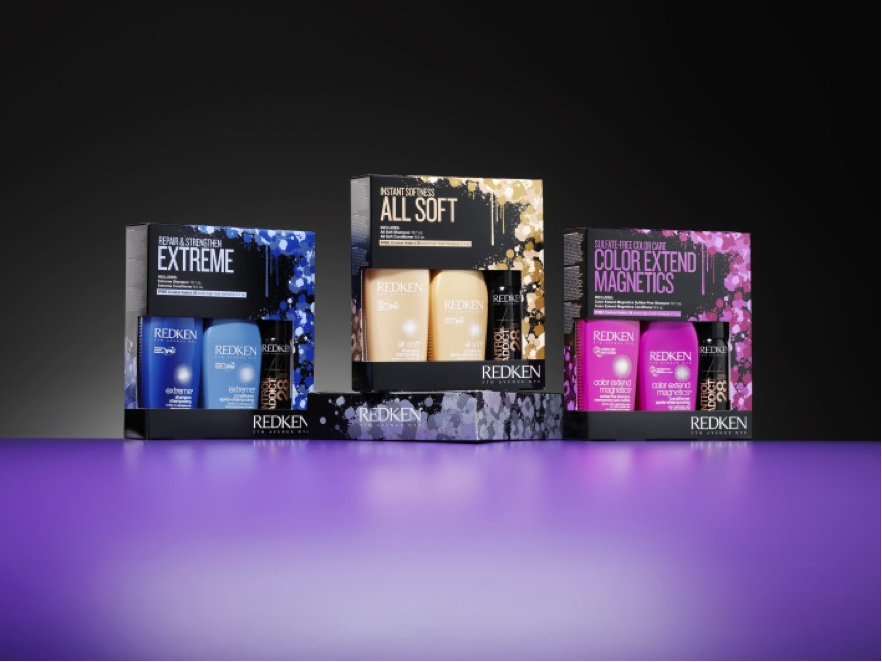
With the variety of manufacturing options available to add multisensory packaging effects, brands across all industries are beginning to branch out and use foils. One of the most talked about topics and points of confusion is the difference between cold foil and hot foil printing, along with what the pros and cons are of each method. Choosing the right method is tied to many factors, but having this baseline understanding will help with price, speed to market, brand and ultimately, the consumer impact.
HOT FOIL STAMPING

A process accomplished on a foil stamping machine that uses a metal plate that has been engraved with an image of the desired design required for the particular application. The plate strikes a roll of foil film, which causes the foil to adhere to the plate. The metal plate then strikes the substrate that is to be imprinted and transfers the foil onto the area of the document requiring the metallic effect. The result is a document that has a highly reflective image with a bright and dense metallic appearance.
COLD FOIL PRINTING

A process that can be done in-line on a press. Using a standard printing plate, an image is printed onto a substrate with the use of a UV-curable cold foil adhesive. A UV dryer then activates the adhesive. The extracted foil is affixed to the printed adhesive and an image is created. Foil that does not adhere to the adhesive is removed.
THINGS TO CONSIDER FOR COLD FOIL AND HOT FOIL PRINTING
Small Foil Area: As we learned above, the cold foil process is done in-line on the press. If the foil area (the area on the sheet that will be foiled) is small and does not make use of the entire foil ribbon over the sheet, there can be an excessive amount of waste of foil not being applied.
Comparatively, the hot foil printing process (done on a hot stamping machine) allows for the foil ribbon to precisely index in small increments and thus maximizing the use of the entire foil ribbon.
Large foil area: In this case, cold foil can be a cost effective choice. The large foil area needed on the sheet will allow maximum use of the foil ribbon. Along with the ability to cold foil in-line on press, the second operation of hot foil stamping can be eliminated.
Substrate being used: Certain substrates can pose a challenge for the cold foil process, such as uncoated stocks. During the cold foil process, a layer of adhesive is applied to the sheet. Uncoated stocks tend to absorb the glue, resulting in less adhesive for the foil to adhere to. This can lead to uneven surfaces, rough edges, and flaking of the foil.
Comparatively, hot foil stamping provides more latitude with substrate types since the foil is applied by heated application onto the sheet versus the use of an adhesive.

In-Line versus Second Operation: The cold foil process is done in-line on press and therefore eliminates the need for a second off-line operation of hot foil stamping. Being in-line also means that inks, varnishes, and coatings can be applied over the cold foil on press; whereas, that would be an additional press pass following the hot stamping process.
While there are in-line efficiencies of cold foil, considerations such as longer ‘make ready’ time, adjustments to foil ribbon tension during the run, and the overall coordination of the cold foil components with the press units that may have drawbacks. Any issues with the cold foil components spells downtime for the entire press.

Foil Color: There are limited colors available in cold foil and with one of the most popular being silver. To achieve a specific color it is necessary to lay down ink over foil being applied on press.
Comparatively, with hot foil printing there is a wider range of foil colors such as gold, silver, blue and red. In addition, hot foil stamping also offers different types of foils such as holographic, patterned, and clear foil options that are not available in cold foil printing.
Brilliance of Foil: Hot foil traditionally results in a more brilliant look versus cold foil. Hot foil is applied by heat application giving a different release of color.
QUESTIONS TO ASK REGARDING COLD AND HOT FOIL PRINTING
When choosing between hot and cold foiling, it’s important to keep the end game in mind. It’s best to start with the product’s particular needs and then find a match based on how well the capabilities of each technology align with the product. Here are some of the questions that need to be answered:
- What is best for the application? You need to understand what your product does and who it’s targeting. The application itself should be able to point you in a particular direction.
- What is the budget? While budget shouldn’t be the first consideration, it can often limit you to a particular solution.
- What substrate is the foil being used with? Again, the packaging’s substrate may determine the preferred method of foiling. Certain substrates only work with hot foil, while others are best with cold foil.
- What type of look are you going for? One of the easiest ways to decide whether to use hot of cold foil stamping relies on the type of look you’re for. Traditionally hot foil provides more options, more definition, and better brilliance.
FINISHES THAT MATTER
At JohnsByrne, we are one of the leading print and packaging solutions providers in the industry. We have worked with top brands all over the world and pride ourselves on our commitment to pressing the limits through the creation of unique and compelling solutions. To learn more about the cold foil or hot foil printing process, contact us today.
Related Posts
When it comes to creating standout packaging, the folding and gluing process is the unsung hero that transforms flat, printed materials into eye-catching, functional packages. … Fast 5 Facts: Folding and Gluing: Bringing Packaging to Life!
In today’s competitive market, packaging does more than just protect a product; it tells a story, engages the senses, and leaves a lasting impression on … 20 Premium Packaging Finishes: A Guide to Elevating Your Brand Experience
This is simple: it’s not just a box. Every product deserves packaging that is both practical and exceptionally appealing. It should be structurally conceived so … Custom Product Packaging Solutions for Brand Loyalty and Preference

